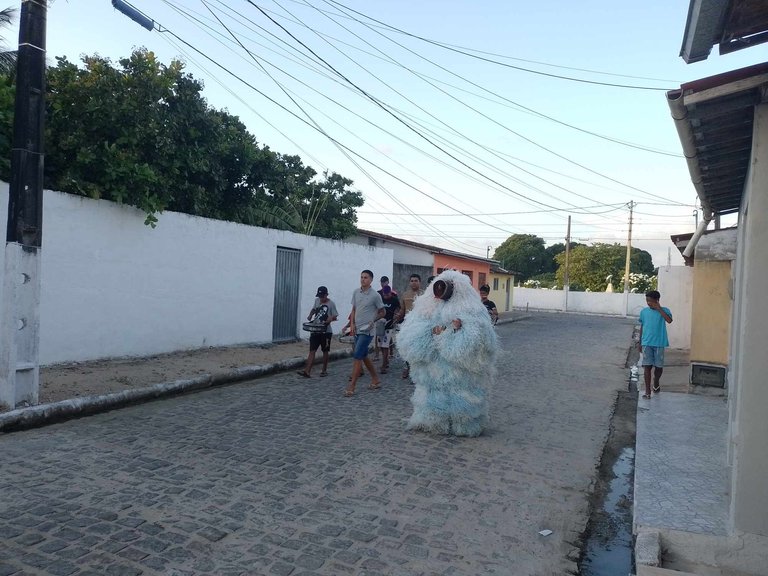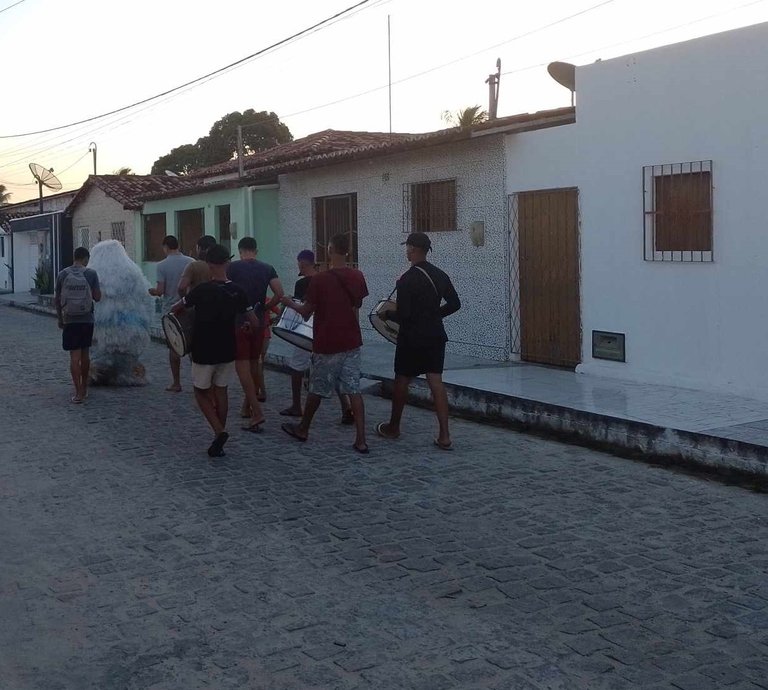NORTHEAST CARNIVAL: LA URSA AND PAPANGU / CARNAVAL NO NORDESTE: LA URSA E PAPANGU
|EN|
Hello everybody!
La ursa and papangu are joke held in the Brazilian Northeast during the carnival period. In la ursa, the main character is the bear, in this “joke”, a person dresses up as a bear and a group of people with cans and drums accompany him, the beating of cans is synchronized and in some moments, they sing the song “a la ursa wants money, whoever doesn’t give it is a tight-fisted.” This activity usually takes place on the weekends before Carnival and on Carnival days. Its purpose is to bring people fun, maintain centuries-old traditions and raise some money through fun. When receiving money, the bear does a little dance of thanks.


La ursa was brought to Brazil by Italian immigrants, adapting to Brazilian culture and transforming into something unique to the Northeast region of the country. Children are excited to see the bears when Carnival arrives. The bears they parade through the city streets attracting attention wherever they go, children love, but they usually run away in fear when they approach, the sound of the drums informs them of their presence. “This tradition is old and is passed down from father to son”
And the papangus?
The papangus are another sensation at the carnival in the northeastern interior. A group of people wear old clothes, cover their faces with masks or cloths carrying sticks or clubs in their hands and some accompany them with drums. They walk through the streets of the city asking for money and playing the game of chasing children, during this period it is very common to hear the expression: be careful, here comes the papangu!


People's fear when they hear the word papangu is great, because they carry sticks in their hands, this must really scare them, but these sticks are used in a dance when they receive some money. When there is only one papangu, when receiving money he performs his dance scratching the ground, in some cases causing flames or sparks to appear.
Many visitors don't understand and think it's bad for them to scare children, but it's a translation that has lasted more than 100 years. They don't hurt or touch the children, they just ensure that this tradition isn't lost over the generations.

So, What did you think of these traditions? Do you have la ursa or papangu in your country or city? Are they the same as the ones I mentioned or do they have characteristics specific to your region? Cultural diversity makes something simple unique in each place in the world.
If you've made it this far, thank you for your attention!
Source of images and video: my cell phone.

|PT|
Olá pessoal!
A La ursa e papangu são brincadeiras realizadas no Nordeste brasileiro no período do carnaval. Em la ursa o personagem principal é o urso, nessa “brincadeira” uma pessoa se veste de urso e um grupo de pessoas com latas e tambores o acompanham, o bater das latas é sincronizado e em alguns momentos cantam o música “a la ursa quer dinheiro, quem não dá é pirangueiro”. Esta atividade acontece geralmente nos finais de semana anteriores ao Carnaval e nos dias de Carnaval. Seu objetivo é divertir as pessoas, manter tradições centenárias e arrecadar dinheiro através da diversão. Ao receber o dinheiro, o urso faz uma dancinha de agradecimento.
A la ursa foi trazida para o Brasil por imigrantes italianos, adaptando-se à cultura brasileira e transformando-se em algo único na região Nordeste do país. As crianças ficam animadas para ver os ursos quando chega o Carnaval. Os ursos desfilam pelas ruas da cidade chamando a atenção por onde passam, as crianças adoram, mas costumam fugir com medo quando se aproximam, o som dos tambores informa de sua presença. “Esta tradição é antiga e é passada de pai para filho”
E o papangus?
Os papangus são outra sensação no carnaval do interior nordestino. Um grupo de pessoas veste roupas velhas, cobre o rosto com máscaras ou panos carregando paus ou porretes nas mãos e alguns os acompanham com tambores. Eles andam pelas ruas da cidade pedindo dinheiro e brincando de correr atrás de crianças, nesse período é muito comum ouvir a expressão: cuidado, aí vem o papangu!
O medo das pessoas ao ouvirem a palavra papangu é grande, pois elas carregam paus nas mãos, isso deve assustar muito, mas esses paus são usados em uma dança quando recebem algum dinheiro. Quando há apenas um papangu, ao receber dinheiro ele executa sua dança arranhando o chão, em alguns casos provocando o aparecimento de chamas ou faíscas.
Muitos visitantes não entendem e acham que é ruim assustar as crianças, mas é uma tradução que já dura mais de 100 anos. Eles não machucam nem tocam as crianças, apenas garantem que essa tradição não se perca ao longo das gerações.
E aí, o que você achou dessas tradições? Você tem la ursa ou papangu em seu país ou cidade? São iguais aos que mencionei ou possuem características específicas da sua região? A diversidade cultural torna algo simples único em cada lugar do mundo.
Se você chegou até aqui, obrigado pela atenção!
Fonte das imagens e vídeo: meu celular.
Obrigado por promover a Língua Portuguesa em suas postagens.
Vamos seguir fortalecendo a comunidade lusófona dentro da Hive.